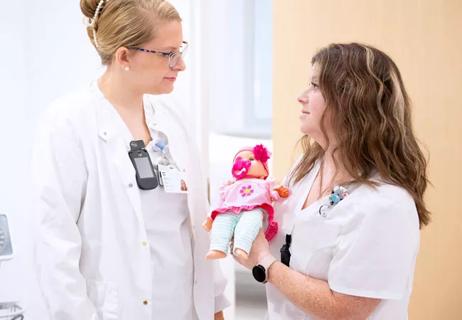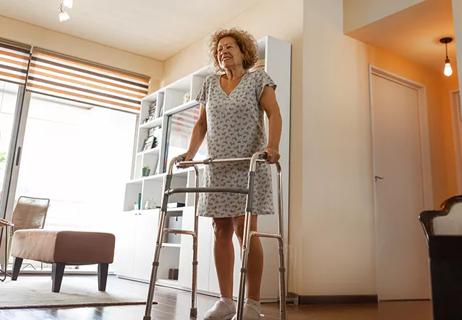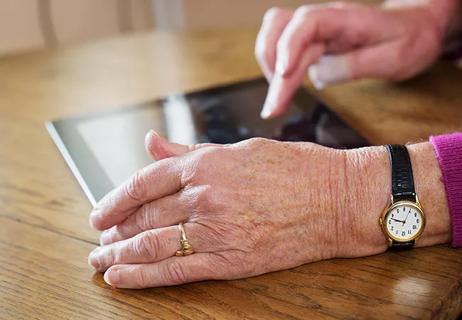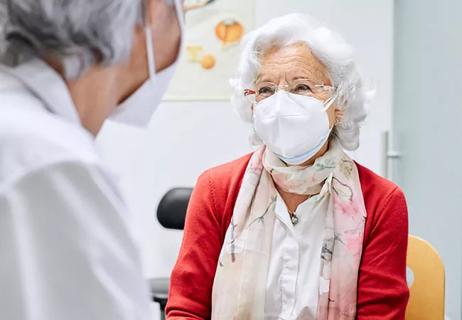A clinical hypertension specialist puts recommendations in context

A little more than a year has passed since the much-discussed release of the 2017 hypertension guideline from the American College of Cardiology/American Heart Association (ACC/AHA). Cleveland Clinic staff cardiologist Luke Laffin, MD, thinks it’s a good time to take stock of the guideline and its place in practice. He fielded the following questions on the guideline and the state of hypertension care in general from his vantage point as a clinical specialist in hypertension in the Section of Preventive Cardiology and Rehabilitation.
Cleveland Clinic is a non-profit academic medical center. Advertising on our site helps support our mission. We do not endorse non-Cleveland Clinic products or services. Policy
Q: How has the 2017 ACC/AHA guideline shaped practice to date?
Dr. Laffin: I don’t think the guideline has actually changed practice for most physicians as much at it has aligned with and supported what many clinicians have been doing for years. That said, I think there are five main contributions the guideline has made in terms of topics or areas it has helpfully expounded or built upon.
First is simply clarifying how to measure blood pressure properly. There’s a nice section that discusses what size cuff should be used and how blood pressure should be measured in the office as well as at home.
Second is the emphasis placed on home blood pressure monitoring. For years we’ve been having patients do this and send us their numbers, but now we have more and more data to suggest that home blood pressures can often be more useful than just a once-every-six-months blood pressure taken in clinic.
Third is the creation of new definitions for elevated blood pressure versus hypertension. This reflects that we want to be a bit more aggressive with decreasing blood pressure in our higher-risk patients and getting below certain targets. Many of us have been doing that over the past three years or so based on data from recent large blood pressure trials, such as SPRINT.
Fourth is the idea of targeting lower pressures based on cardiovascular risk — specifically, 10-year cardiovascular risk and the likelihood of stroke, myocardial infarction or similar events. Of course, we’ve been doing similar risk-based targeting for lipid therapy for years, but now we’ve transitioned it more fully to the blood pressure realm.
Finally there’s the focus on moving more toward using combination therapy — one pill containing two or three different medications — rather than just starting one medication at a time.
Q: When the guideline was issued, there was much talk about how more people were going to be on medications because treatment thresholds had been lowered. Has that come to pass?
Dr. Laffin: I don’t think things have changed that much. Generally, the people who may be on slightly more medications or higher doses are those who are at higher risk because we are targeting lower blood pressures. It’s important to remember that despite all the controversy that surrounded the guideline and labeling patients who are at 130/80 mmHg or higher as having stage 1 hypertension, the focus is really not on adding pharmacotherapy. Instead, the focus is on doing things that will lower blood pressure without medicines, such as weight reduction, dietary sodium reduction and proper sleep hygiene.
Q: You mentioned a greater focus on combination therapy. Can you speak to what’s involved in deciding on combination therapy?
Dr. Laffin: When it comes to combination therapy, the thing to remember is that the various classes of blood pressure medicines can have synergistic effects with each other, and it’s been shown that a moderate dose of two medications is probably more efficacious and better, in the long run, than just a high dose of one. So we have to take that into consideration.
The other benefit to combination therapy is that it’s easier to take. Patients will more readily take one pill that may have two or three medicines in it versus three different pills. And fortunately, even these combination therapies are generally quite affordable. We’re not talking $100 a month or anything like that.
One drawback is that patients sometimes will perceive a disconnect between being told their blood pressure isn’t that high and then being started on two medications rather than just one. In those cases it’s important to explain that you’re aiming for a synergistic effect. You might say, “We might be able to get away with one medication, but it’s probably better to have moderate doses of two medications that work together.”
Q: What are the key factors that guide your choice of drug or drug class for different patient populations?
Dr. Laffin: The two main factors I use are patient age and any comorbidities they may have. Some comorbidities shape therapy in very well-recognized ways, such as stage 3 or higher chronic kidney disease, which calls for a blocker of the renin-angiotensin system. Often an additional class of medication will be needed to control the blood pressure in this setting, and typically a diuretic works well.
The cardiology patients I regularly see often will have compelling indications for beta-blockers, such as heart failure with reduced ejection fraction, left ventricular systolic dysfunction, an arrhythmia that needs to be controlled, or a recent myocardial infarction.
As for age, when patients reach 75 or 80 years old, we need to remember that they will tend to have stiffer blood vessels. This makes them likely to respond a bit better to calcium channel blockers.
Q: Speaking of the elderly, the 2017 guideline raised concern about balancing benefits and harms from more aggressive blood pressure control in the elderly. Do you change your thresholds for those patients?
Dr. Laffin: You definitely have to be aware of them. The data that changed the recommendations most significantly were from the SPRINT trial. That study enrolled a group of patients who were elderly — over 75 — and it did show benefit, but these were relatively robust 75-year-olds.
Where we run into trouble is in people with stiff blood vessels. As we age, the diastolic blood pressure tends to decrease, so we get a separation between the systolic and diastolic pressures. This demands vigilance to keep the diastolic pressure from dropping too low. The data are still conflicted about how low is too low, but we generally don’t want to go below 55 to 60 mmHg.
We also need to recognize that elderly people don’t tend to drink as much fluid and the effect of certain blood pressure medications is potentiated when a patient is dehydrated. For example, ACE inhibitors and angiotensin receptor blockers tend to have more potency, so it’s important to explain to patients the need to stay hydrated to reduce the risk of acute kidney injury.
Q: Earlier you mentioned home blood pressure monitoring. How are you using this to help titrate meds or control blood pressure in your patients?
Dr. Laffin: Most of the patients I see have resistant hypertension, so they’re taking at least three blood pressure medications without controlled blood pressure or to reach goal blood pressure. What I have them do is send me their measurements via our electronic medical record or via email just so we can have a better sense of where they are two or three weeks after their visit. This avoids waiting three months until we see them again to address any issues.
It’s very important to monitor blood pressure at home. When medication changes are made, I typically recommend checking blood pressure at least three or four times a week. But for a patient who’s been on a stable dose of one or two medications, it’s reasonable to check only a couple times a month. That’s been shown to be a decent marker of where a patient’s blood pressure generally stays.
Q: How do you respond when patients ask whether and when they can come off their antihypertensive meds?
Dr. Laffin: It’s a very common question. What I tell patients — and the data support this — is that blood pressure management is 70 percent lifestyle and 30 percent medication therapy.
Coming back to the 2017 ACC/AHA guideline, it includes a great chart that profiles all the nonpharmacological strategies to lower blood pressure. For example, there’s the DASH diet, which is a low-sodium, Mediterranean-focused diet that’s been shown to reduce systolic blood pressure in a hypertensive patient by about 10 mmHg. That can be coupled with weight loss, which has been shown to reduce blood pressure by about 5 mmHg if one’s ideal weight is reached. And regular exercise will yield about a 5- to 8-mmHg reduction. If you add those up, you have a reduction of about 20 mmHg or more.
But it ultimately depends on the patient’s situation. For someone who’s overweight, sedentary and eating a high-sodium diet, I can tell them they might be able to come off their medication — or not start it in the first place — if they do what’s asked of them on the lifestyle front. But for a patient who’s 75 and in good shape and already watching their sodium, elevated blood pressure is likely a consequence of years of stiffening blood vessels, so they may need blood pressure medicine for the rest of their life. But that’s OK, and then the goal can be to keep it two just one or two medications.
This post was derived from an episode of Cleveland Clinic’s “Cardiac Consult” podcast for healthcare professionals. For the full 13-minute podcast with Dr. Laffin, listen to the episode here or subscribe wherever you get your podcasts.

Pilot study confirms feasibility of conducting additional research on the novel treatment

Longer hospitalization does not mean a safer, faster recovery for patients age 70+

Structured data helps identify older adults at risk for poor outcomes, defines patients who require more comprehensive assessments

Self-administered tool can be completed in 10 minutes in waiting room

Social prescribing turns leisure activities into good “medicine”

A large geriatric study aims to find the answers

Analysis underscores how telehealth can help pinpoint elder abuse